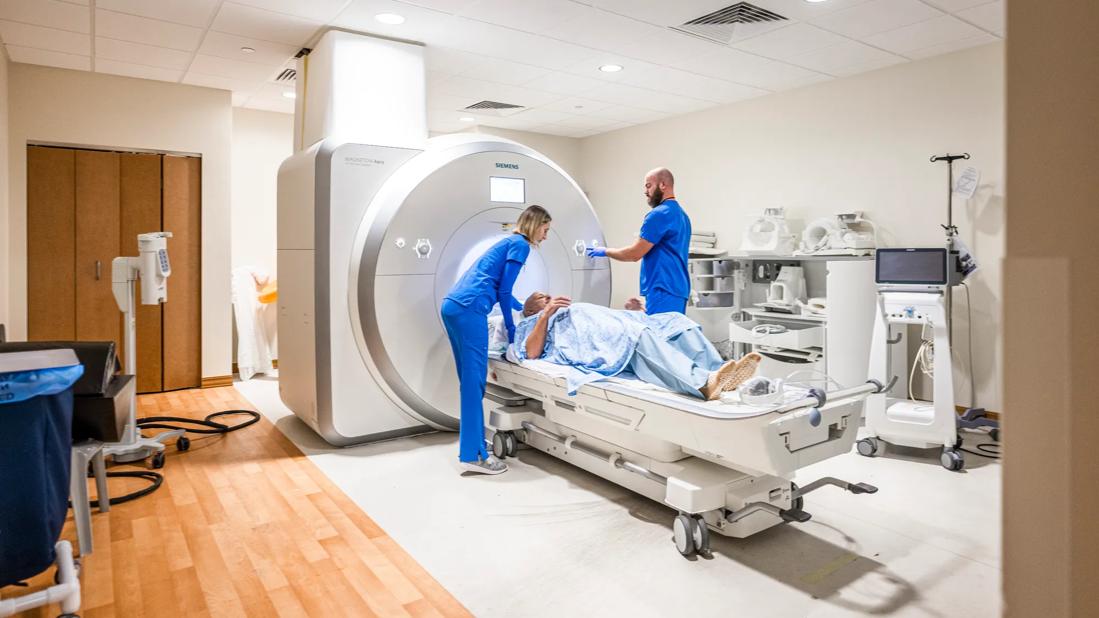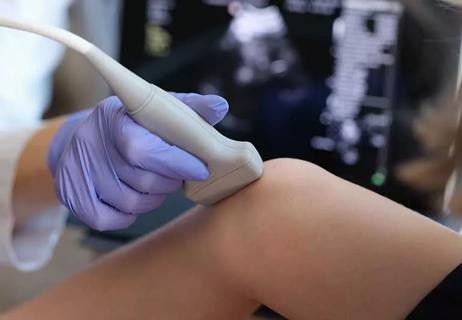CTs and MRIs use different technologies to show different things — neither is necessarily ‘better’ than the other

Some injuries or conditions you can see with the naked eye. Others require a more in-depth look. And if your healthcare provider suspects a condition like internal bleeding, tumors or muscle damage, they may order a CT scan or an MRI.
Advertisement
Cleveland Clinic is a non-profit academic medical center. Advertising on our site helps support our mission. We do not endorse non-Cleveland Clinic products or services. Policy
The choice to use a CT scan vs. an MRI is a call your provider makes, primarily based on what they suspect they’ll find.
CT scans and MRIs are both imaging technologies, not treatments. That means they help your provider make diagnoses, plan your treatment and monitor changes in your body.
“CTs and MRIs are two ways of looking inside your body, beyond the skin, and seeing what’s going on,” explains radiologist Albert Parlade, MD. “MRIs and CTs are able to see different things inside your body to help your provider make a diagnosis.”
When it comes to a CT scan vs. an MRI, which one is better for you depends on certain factors, like what exactly your provider is searching for, as well as your health status.
CT scans and MRIs use different technologies to see what’s happening inside your body.
For a quick look, here are some differences between CT and MRI:
| CT | MRI | |
|---|---|---|
| Technology | X-ray | Magnets and radio waves |
| Examples of uses | Bones, stones, blood, organs and lungs | Joints, nerves, brain and masses |
| Risks | Potential for radiation exposure | Not for people with some metal implants or who can’t lie still for the procedure |
| Procedure time | Less than a minute | 20 to 50 minutes |
| Technology | ||
| CT | ||
| X-ray | ||
| MRI | ||
| Magnets and radio waves | ||
| Examples of uses | ||
| CT | ||
| Bones, stones, blood, organs and lungs | ||
| MRI | ||
| Joints, nerves, brain and masses | ||
| Risks | ||
| CT | ||
| Potential for radiation exposure | ||
| MRI | ||
| Not for people with some metal implants or who can’t lie still for the procedure | ||
| Procedure time | ||
| CT | ||
| Less than a minute | ||
| MRI | ||
| 20 to 50 minutes |
CT stands for “computed tomography scan.” Some people also call it a CAT scan. You can think of a CT scan as a 3D X-ray machine.
Because CT scanners use X-rays, they can show the same things as an X-ray but with much more precision. An X-ray is a flat look at the area being imaged, whereas a CT gives a more complete, in-depth picture.
CT scans are used to look at things like:
Advertisement
“CTs are good at looking at ‘bones and stones’ — like kidney stones and gallstones,” Dr. Parlade says. “Also, surgeons commonly use CTs to plan surgeries. For example, an orthopaedic surgeon may want a 3D image of a bone before repairing a complex fracture.”
Getting a CT scan should be a quick and painless process. You lie on a table that moves slowly through a doughnut-shaped scanner. Depending on what your provider is looking for, you may also need to have an IV injection of a contrast dye. Each scan takes less than a minute.
The biggest concern some people have with CT scans (and X-rays for that matter) is the potential for radiation exposure. Some experts suggest that the ionizing radiation given off by CT scans can slightly increase cancer risk in some people. But the exact risk is a matter of controversy. The U.S. Food and Drug Administration (FDA) says the risk of cancer from CT radiation is “of statistical uncertainty” based on current scientific knowledge.
But because there may be some risk from CT radiation, you’re not a good candidate for a CT scan when you’re pregnant (but some exceptions may be made if the scan is deemed absolutely necessary).
MRI stands for “magnetic resonance imaging.” In short, MRIs use magnets and radio waves to create images of the inside of your body.
MRIs are used to look at things like:
MRIs are really good at differentiating tissue. For example, a provider may use a full-body CT to spot tumors. Then, order an MRI to better understand any masses found in the CT.
“Also, you can see some nerves with MRI. You can see if there’s injury or inflammation in a nerve in certain parts of the body,” Dr. Parlade illustrates. “We don’t directly see nerves on a CT scan.”
A typical MRI scan takes about 30 to 50 minutes, and you have to lie very still during the procedure. The machines can be loud, and some people may benefit from wearing earplugs or using headphones to listen to music during their scan. And depending on what your provider is looking for, they may use IV contrast dye.
While an MRI may be a better technique to see certain structures in your body, not everyone is a good candidate.
If you have certain types of metal in your body, you can’t get an MRI. That’s because an MRI is essentially a magnet, so it can interfere with some metal implants. That includes some pacemakers, defibrillators or shunts.
Advertisement
Neither a CT nor an MRI is always better — it’s a matter of what you’re looking for and how well you can tolerate each, Dr. Parlade emphasizes.
“A lot of times, people think one is better than the other,” he notes. “But it really depends on what your doctor’s question is.”
Whether your provider orders a CT or an MRI, the goal is to see what’s happening inside your body to get you the best treatment.
Advertisement
Learn more about our editorial process.
Advertisement

One medical test, two different parts

From faster diagnoses to less paperwork, healthcare providers are using artificial intelligence to help take better care of you

If the area is bleeding a lot or the wound is near your face or genitals, you likely need a specialist’s care

Lots of things can activate the herpes simplex virus, from the common cold and cold weather to cracked skin and cosmetic procedures

Honey can help make a sore throat more bearable by tamping down inflammation and coating your throat

Internists see people 18 and over, while family medicine physicians can treat people of all ages — but from there, they have more similarities than differences

A combination of rest, fluids and over-the-counter medications can help you feel better fast

Changing how you breathe, gargling water and distracting yourself are all common ways to stop your diaphragm from spasming

Start having sex about 72 hours before ovulation, then at least every other day during your fertile window

Attachment theory suggests that your earliest relationships shape connections throughout your life

It isn’t a recognized mental health disorder, but research shows that problematic social media use can negatively affect your mental health, self-esteem and sleep